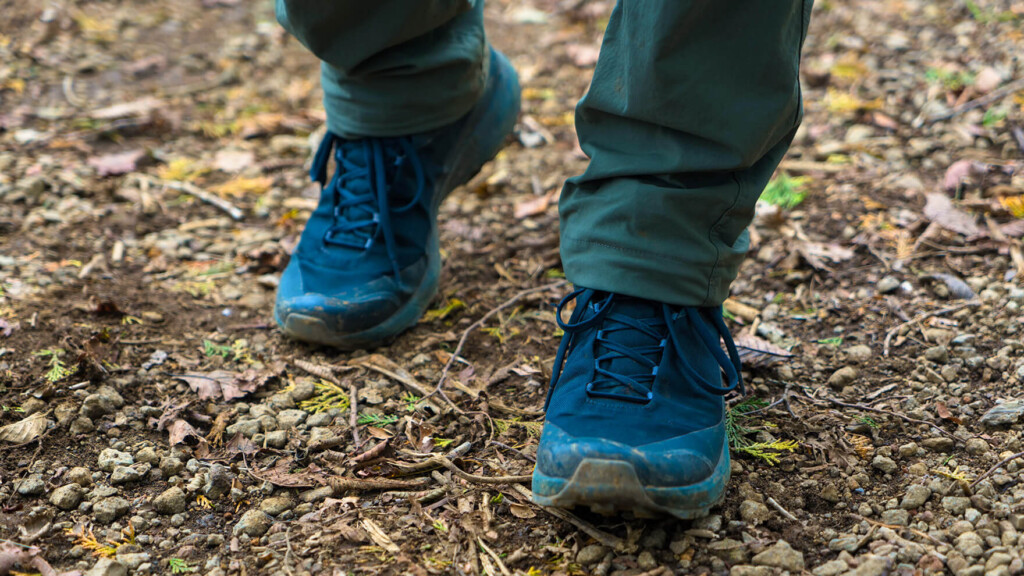
How to Fit Trekking Shoes and 6 Points to Check
Last time, we summarized how to properly choose trekking shoes for hiking , but this time we'll continue with that. We have finally summarized the steps and tips on how to actually wear shoes (fitting) at a store to see if they really suit you or not, whether the shoes you actually think are right for you.
table of contents
How to Fit
Fitting process
You won't know what trekking shoes are best until you try them on. First, we have summarized the steps to try on clothes based on various information sources and experiences of trying them on at stores across Tokyo.
- Fitting is done at the most active afternoon time rather than in the morning (foot size and size vary slightly over the course of the day, and it is said that the best fit is to match the size of your feet during the actual time of day).
- Bring thick socks and insoles that you can actually wear in the mountains. If it's a polite outdoor shop, it may be available in the store, but if there is no one, try to wear as thick as possible at home, and try to get as close as possible to the actual situation as possible.
- If possible, measure your feet at the store and ask the staff to bring you the perfect size. If you can't measure your size in the store, try trying sizes about 0.5 to 1 cm larger than your usual shoe size (be careful as size standards vary depending on the shoe, the foot size is not always correct as 0.5 cm).
- Remove the insole from the shoes and place your feet on the heels to match the insole. If there is almost no room in the toes, the shoe is likely to not fit your feet, so consider a different size.
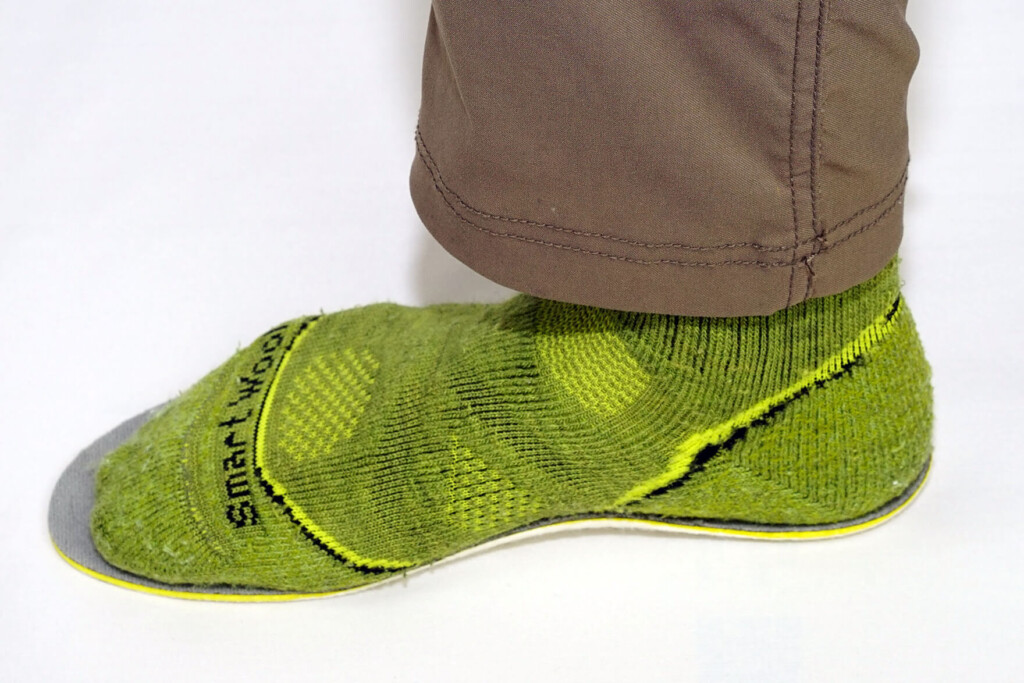
When the footbed is adjusted to the feet, it is not recommended to do so that there is no room in the toes.
- If the insole is not fine, put it inside and actually put on the shoes. Loosen all the laces and put on, then try to stuff your toes into the front of the shoe. So I put a finger in my heel and try to see if it fits easily.
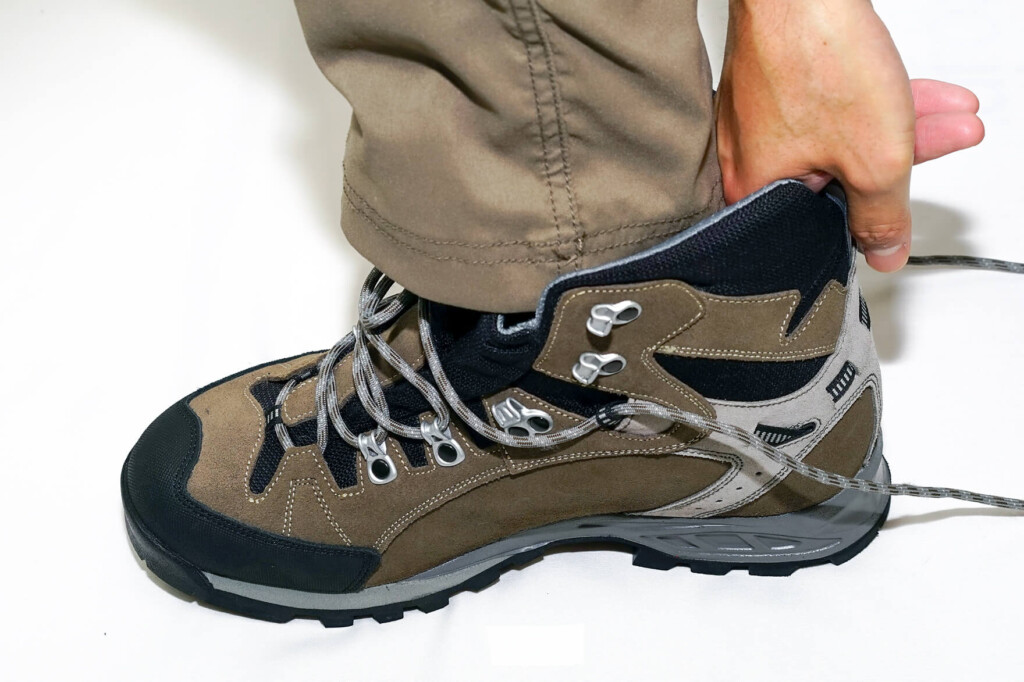
- If it's okay, then tap your heels against the ground and match your heels to the heels of your shoes (there should be a few millimeters of space on your toes at the time).
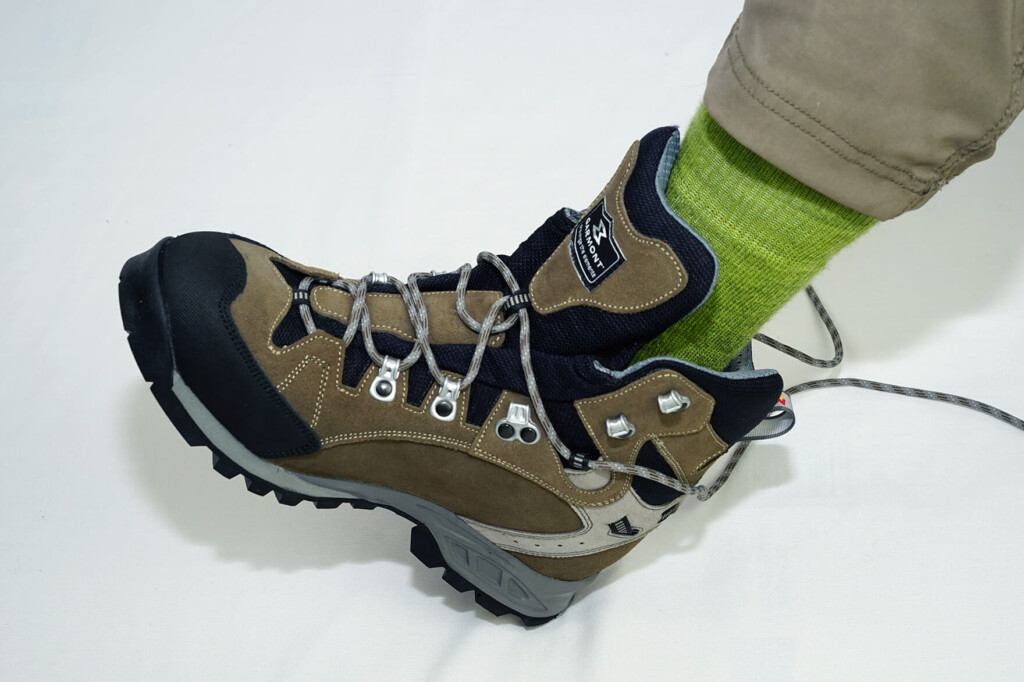
If you don't tighten your trekking shoes to match the heels, your feet will move inside your shoes while you're walking.
- Tighten the strings in order starting from the tip of the boot. The basic rule is to tighten the instep of the foot to a moderate degree, while the top of the ankle joints feel moderately tight.

The type that allows you to hook the string with the hook where the instep is tightened is less likely to loosen and is easy to tighten.
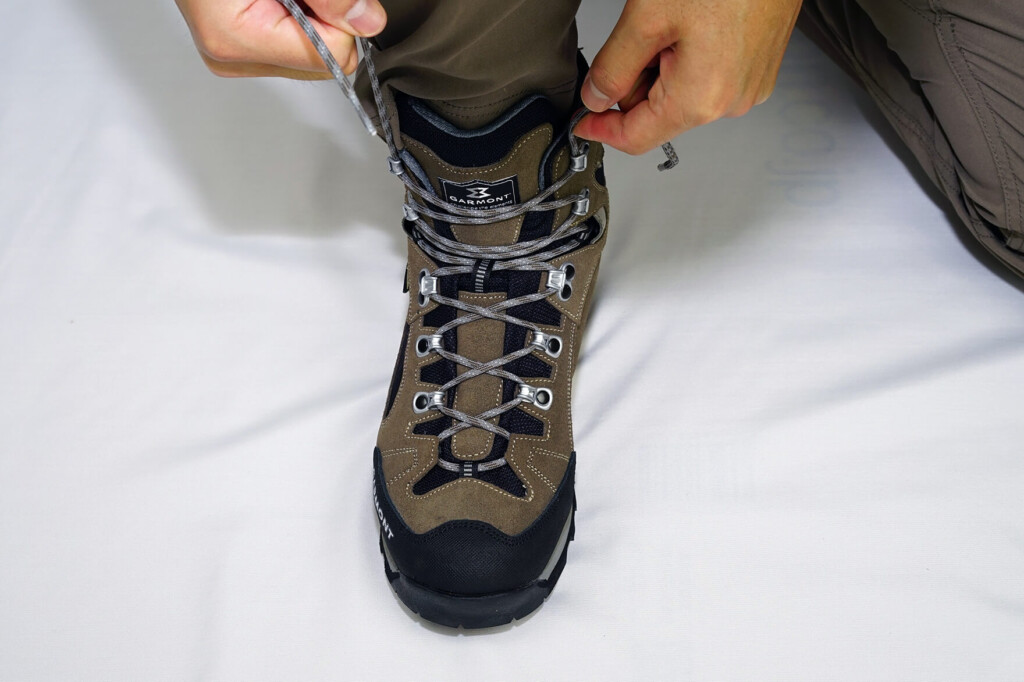
In reality, the tightness of the ankle area is more stable when you lift up and tighten up on the climb, and more sturdy when lifting down, so the optimal strength is not constant.
- This will then securely secure with a space created on the toes, so from here on you will have to try various ways to walk and carefully check how it will go with your shoes.
Check points when trying on trekking shoes
1. Whether there is any feeling of pressure on the entire foot or any part that is unnaturally hit?
If you feel that the overall feeling is obviously cramped when you put them on . Also, if you walk and find a part of the shoe you can hit, consult with the store clerk and if it doesn't work out even if you get used to wearing it, give up and say the shoe doesn't fit.
What you should note here the size and shape of the feet are not the same on the left and right sides, but are slightly different . For this reason, don't forget to check whether the fitting is OK on both the left and right sides. Unless it is custom-made, it is difficult to fit perfectly on the left and right sides, but there are ways to change the slightest difference to achieve a more perfect fit, such as replacing it with a commercial footbed.
2. I walk in various ways and see if my feet move in my shoes
, such as walking on flat ground, going up and down the slope, or traverse the slope (crossing the slope laterally), and check to see if your feet are blurred . Furthermore, try moving your feet back and forth or sideways, such as stretching your Achilles tendon or positioning like repeating sideways, while keeping the sole of your shoes on the ground. When you apply force like this, you can see how much your feet play in your shoes. It would be ideal to not move, but I don't think it will not move at all. However, if you compare several pairs, you will be able to see a model that fits more perfectly.
3. Is the ease of movement around the ankle, the hold, and the softness of the touch comfortable?
Especially in the case of high-cut trekking shoes, the ankle area that holds the shoes tightly is useful for preventing injuries, but as with ski boots, if you put them too tightly on them, they can interfere with comfortable walking. For this reason, we check whether the degree of freedom around the ankle and the internal cushions are comfortable .
4. Whether the toes don't hit
Take the plunge here and try pounding your toes onto the floor several times. If the toes hit the shoe easily and hurt, the size may be small or the toes may not be the right shape . Conversely, having too much space in the toes (=the shoes are too large) can cause your feet to get caught on an obstacle, causing a sprain.
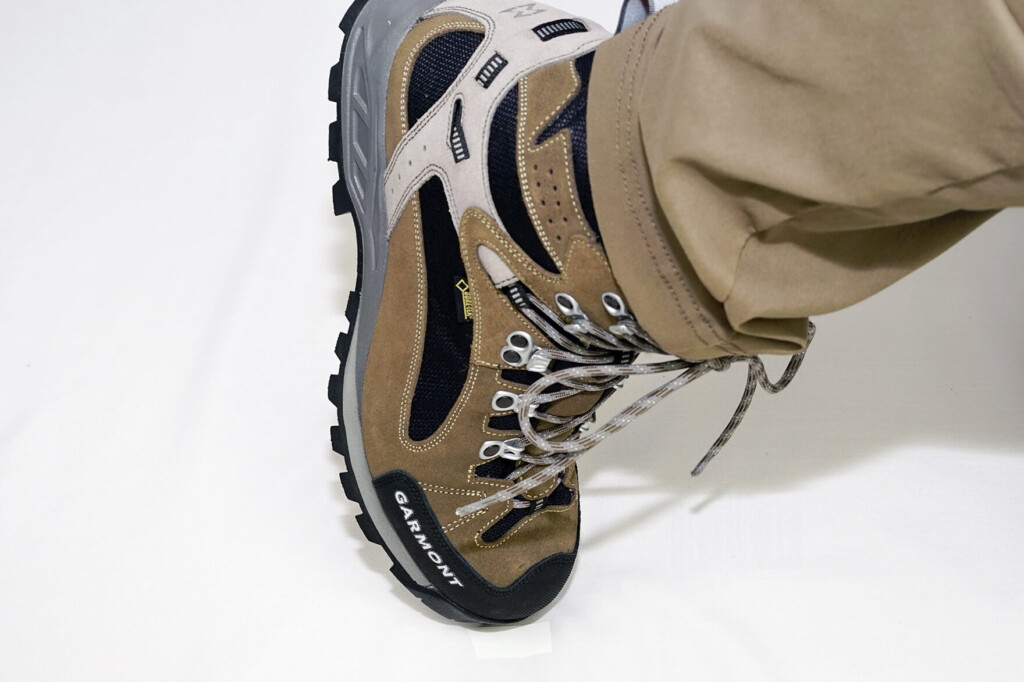
5. Is the heel firmly fixed?
A fluttering heel while walking can cause unstable movement of your foot, and can also cause blisters, making it dangerous. Put some force on check if your heels do not stand out when you bend your shoes I don't think they'll be completely intimate, but if the float is clearly large, it's likely that the size doesn't fit.
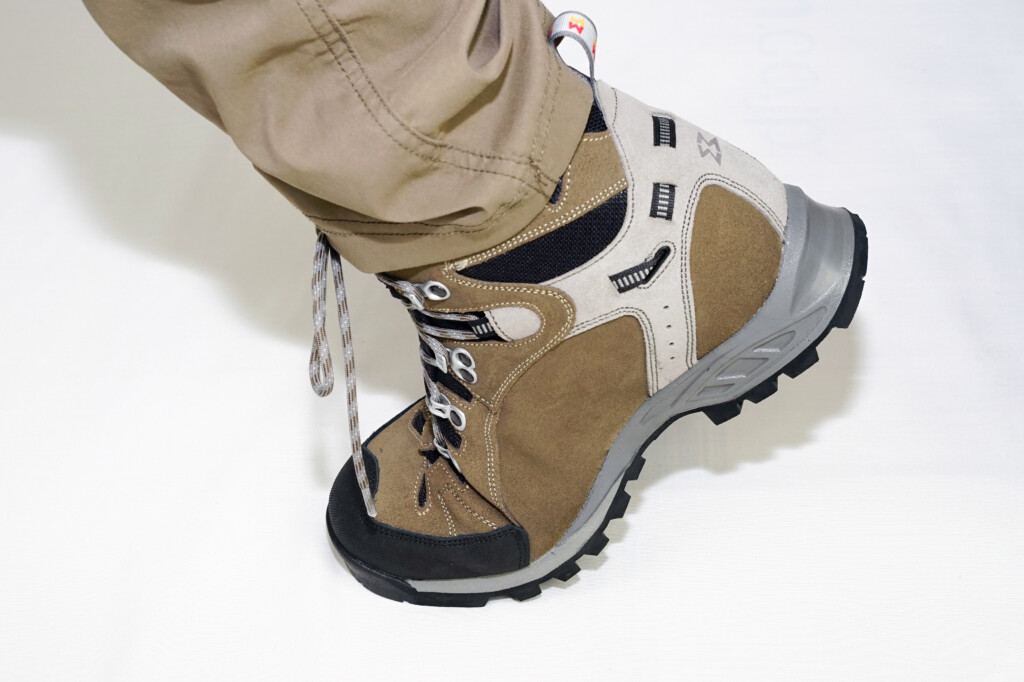
6. Will the wrinkles on the toe joints hurt?
The soles of trekking shoes are generally made to be hard and difficult to bending, but this does not mean they do not bend at all. When walking, the load will be applied instantaneously, and wrinkles should appear in the joints of the toes, as shown in the photo above. At this time, check whether the wrinkled area will hit more than necessary and rub against it, causing blisters . However, depending on the model, the level will vary, but it will generally fit into your feet after wearing it several times, so I think you don't have to worry about it if it's just a small hit.
For an even more comfortable fit: Footbed consideration
Insoles that are pre-attached to purchased shoes usually do minimal work for fit, support and comfort, and you can't expect durability. On the other hand, third-party insoles can be chosen from a variety of models, and can respond to a variety of walking-related issues, such as fatigue-prone, limbs and blisters, pain when hitting part of the foot, and knee pain. Insoles can be broadly divided into the following effects, and in reality, individuality is created by specialized one depending on the model, or by adding shades and other characteristics of each, so it is a good idea to choose one that suits your concerns.
It's less tiring
It absorbs the impact applied to the feet, including the heel, and distributes the load evenly throughout the foot. Reduces fatigue from walking for long periods of time.
The core is stable
By firmly supporting the arch and supporting your weight, it suppresses shaking and movement from the heel to the arch. It also helps to maintain proper posture and prevents injuries.
Improves propulsion
It stabilizes the movement of the arch, disperses impact and makes it easier to transmit force. With correct posture, you can move your joints and muscles effectively without waste, so power is transmitted to the entire body.
Improves fit and comfort
Available in a variety of thicknesses, the insoles can be customized by choosing the right fit. Also, having a function that effectively removes sweat will greatly increase your comfort.

